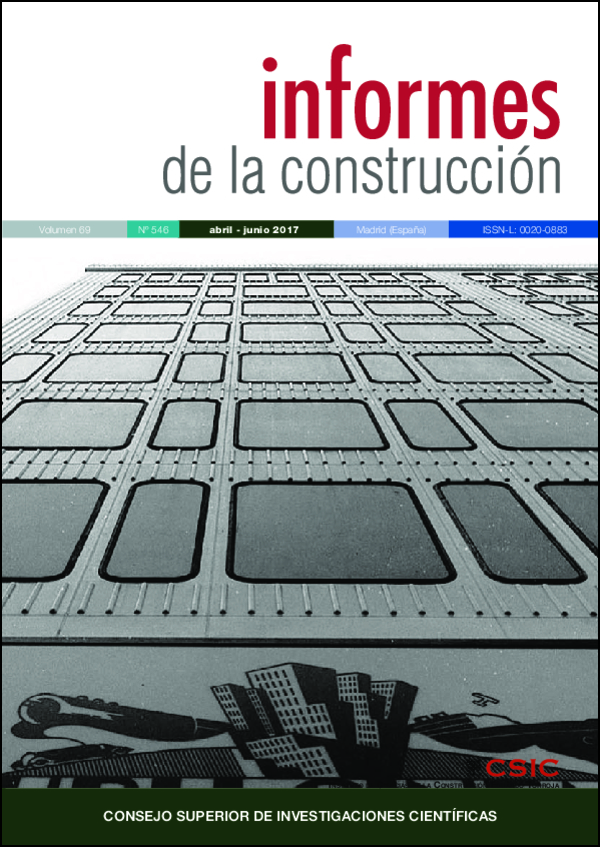Service points in public toilets to minimize and balance the waiting times for women and men
DOI:
https://doi.org/10.3989/ic.15.117Keywords:
public toilets, ladies toilets, dimensioning of public toilets, queues, waiting timesAbstract
The article raises the issue of the queues that usually appear in the ladies toilets in contrast to the fluidity with which gentlemen can access theirs, and points that this situation is only due to bad dimensioning of the toilets and thus that the problem has an easy solution. After describing and parameterizing the queuing forming processes in ladies and gentlemen toilets, a simulation program is used to analyze in each case the influence of the number of service points in waiting times. Finally, the results obtained are used to give recommendations in order to balance the waiting times of ladies and gentlemen while keeping them below reasonable levels.
Downloads
References
(1) Ibáñez, M. E. (1999). La ópera vuelve a BCN. Las reacciones. El Periódico de Catalunya, 8-10-1999 (p. 4).
(2) Cortes Generales (1982). Real Decreto 2816/1982: Reglamento General de Policía de Espectáculos Públicos y Actividades Recreativas. Boletín Oficial del Estado, n.º 267. España.
(3) Greed, C. (2003). Inclusive Urban Design. Public Toilets, Oxford: Architectural Press. PMid:14608657
(4) Scott Brown, D. (1967). Planning the Powder Room. Journal of the American Institute of Architects, April 1967, pp. 81- 83 (traducido y reeditado en 2013 en Armada de Palabras, pp. 150-157, México DF: Arquine).
(5) Edwards, J., McKie, L. (1996). A Serious Issue for the Body Politic. European Journal of Women’s Studies, 3(3): 215-230. https://doi.org/10.1177/135050689600300303
(6) Gaffin, G. (1994). So What? P’s and Q’s. Paediatric and Perinatal Epidemiology, 8(1): 25-26.
(7) García Nieto, J., de la Peña, E. (2001). El cuarto de baño en la vivienda urbana, Madrid: Fundación Cultural COAM. PMCid:PMC1741980
(8) García Nieto, J., de la Peña, E. (2001). El diseño de la higiene. Origen y evolución histórica de los aparatos sanitarios, Madrid: Fundación Cultural COAM. PMCid:PMC1741980
(9) Lupton, E., Miller, J. A. (1992). The Bathroom, the Kitchen, and the Aesthetics of Waste: A Process of Elimination, Cambridge (USA): MIT List Visual Arts Center.
(10) Kira, A. (1977). The Bathroom, New York: Bantam Books. PMCid:PMC1008281
(11) García Nieto, J., de la Peña, E. (2002). Manual de equipamiento higiénico de los edificios. Legislación estatal y autonómica y recomendaciones de diseño, Madrid: Dilex, S. L.
(12) International Organization for Standardization (ISO). http://www.iso.org/iso/home/store/catalogue_ics.htm
(13) Cortes Generales (2010). Orden VIV/561/2010: Documento técnico de condiciones básicas de accesibilidad y no discriminación para el acceso y utilización de los espacios públicos urbanizados. Boletín Oficial del Estado, n.º 61. España.
(14) British Standards Institution (2006). BS 6465-1:2006 Sanitary Installations.
(15) Australian Building Codes Board (2015). National Construction Code 2015, vol. 1, part F2 «Sanitary and Other Facilities». http://services.abcb.gov.au/NCCOnline/Publications/2015/Volume1#TableF2.3 (el acceso es gratuito, pero necesita registro previo).
(16) Peña, D. (2008). Fundamentos de Estadística, Madrid: Alianza Editorial.
Published
How to Cite
Issue
Section
License
Copyright (c) 2017 Consejo Superior de Investigaciones Científicas (CSIC)

This work is licensed under a Creative Commons Attribution 4.0 International License.
© CSIC. Manuscripts published in both the print and online versions of this journal are the property of the Consejo Superior de Investigaciones Científicas, and quoting this source is a requirement for any partial or full reproduction.
All contents of this electronic edition, except where otherwise noted, are distributed under a Creative Commons Attribution 4.0 International (CC BY 4.0) licence. You may read the basic information and the legal text of the licence. The indication of the CC BY 4.0 licence must be expressly stated in this way when necessary.
Self-archiving in repositories, personal webpages or similar, of any version other than the final version of the work produced by the publisher, is not allowed.















